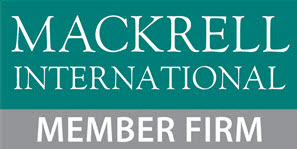By Tyler J. Volm and Tab Wood
Published in the Oregon Business Lawyer Oregon State Bar Business Law Section Newsletter
On the spectrum of post-employment restrictions, noncompete agreements are the most restrictive. On the other end of the spectrum are nondisclosure agreements, which generally prohibit the unauthorized use or transfer of the employer’s confidential information. In the middle of the spectrum are nonsolicitation agreements, which generally prohibit contacting the former employer’s customers in an effort to move their business to the employee’s new place of business. Depending on various factors, a more restrictive covenant may be needed. This article will discuss what an employer should consider prior to requiring noncompete agreements.
What is at stake?
Designed to keep confidential information from walking out the door and across the street to a competitor via a high-level employee, noncompete agreements go even further by prohibiting the employee from working in a similar position for a competitor for a specific duration. ORS 653.295(7)(d) defines a noncompete agreement to mean “an agreement, written or oral, express or implied, between an employer and employee under which the employee agrees that the employee, either alone or as an employee or another person, will not compete with the employer in providing products, processes or services that are similar to the employer’s products, processes or services for a period of time or within a specified geographic area after termination of employment.” Because noncompete agreements are the most restrictive, they are also subject to the most judicial scrutiny, particularly in the employment context. However, noncompete agreements in the sale of a business context are not subject to the restrictions discussed in this article.
Is it worth it?
Before requiring a noncompete agreement for certain employees, the employer must consider three cost points. First, there is the initial cost of drafting and negotiating the agreement. During this process, a company should carefully consider the employee’s position, their access to proprietary information, and the geographic scope and duration of the restriction. Second, there is the cost of administering the agreement. Oregon requires pre-employment notice and a post-employment copy of the agreement within 30 days after the date of termination. There is also the essential administrative cost of maintaining appropriate protections for the trade secrets that constitute the employer’s protectable interest. Third, there is the cost of enforcement, which can quickly rise given the injunctive relief that is regularly sought on an expedited basis in these cases. Even with a prevailing-party provision, a party who seeks to enforce restrictive covenants can expect upfront legal costs. Thus, an employer should consider these three cost points of noncompete agreements on an employee-by-employee basis.
How did we get there?
One of the earliest reported cases of noncompete agreements involved a blacksmith attempting to limit his apprentice from opening up a competing forge within a neighboring hamlet. See Dyer’s Case (1414) 2 Hen. V.,fol. 5., pl. 26. One can understand the mentor blacksmith’s concern in not wanting to train someone who will put him out of business. Traditional case-law analysis examined whether the restriction was reasonable in geographic scope and duration in light of the interest the employer was attempting to protect.
In 2008, Oregon implemented a new statutory scheme to regulate what the legislature perceived to be the over-use of noncompete agreements with employees who were not traditionally subject to these restrictions and who did not have access to confidential, proprietary information. The statute specifically carved out covenants not to solicit or transact business and bonus restriction agreements.
The statute has undergone several amendments since 2008, so practitioners will need to review the effective date of the relevant agreement to determine which statutory scheme was in place when the agreement was signed.
Oregon
Oregon statutory requirements can be summarized as follows:
Advance Notice/Bona Fide Advancement: If the noncompete agreement is required as a condition of employment, the employer must inform the employee two weeks before the first day of employment (or presented to a current employee on a bona fide advancement—usually into a position where the employee will have more access to proprietary information).
Exempt Employee: The employee is not a person described in ORS 653.020, which defines excluded employees.
Protectable Interest: See discussion above of proprietary information.
Salary Threshold: In the year preceding the termination of employment, the total amount of the employee’s gross salary and commissions must exceed the median family income for a four-person family. (For 2022, that number is $100,533.) Note that the statute allows enforcement of a noncompete agreement against an employee that does not meet the salary threshold or exempt employee requirement so long as the employer pays the employee the minimum salary threshold amount during the period of enforcement—i.e., “pay to play” or “garden leave.”
Post-Termination Copy of Agreement: Within 30 days after the date of termination, the employer must provide a signed, written copy of the terms of the noncompete agreement. In the most recent amendments, the Oregon legislature further limited the maximum duration to 12 months (formerly 18 months) for agreements entered into after January 1, 2022. In addition, the legislature changed the language to make a noncompliant agreement “void” instead of “voidable.”
Washington
Washington adhered to the traditional reasonableness analysis for a while longer, until 2019 when it passed its own statute governing noncompete agreements. RCW 49.62, which took effect January 1, 2020,imposes a number of significant restrictions including:
Notice Requirement: The employer must give written notice of the terms of the noncompete before the employee accepts an offer of employment. A separate notice is required where the employee makes less than the threshold amount at the time the agreement is signed, but may ultimately exceed that threshold.
Salary Threshold: $100,000 annually
Maximum Duration: 18 months
Penalty and Attorney Fees Available: The penalty may be enforced even if the court ultimately revises the agreement to conform to reasonable standards under the circumstances. See RCW49.62.080.
Mandatory Choice of Law and Forum: Must be Washington State for a Washington-based employee. Note that some of the Washington requirements are more stringent than those in Oregon.
A litigator’s perspective
The employee has left, and now the question becomes whether or not to litigate. Before that decision is made, the first step in most cases is to send the departing employee a letter reminding them of their duties and obligations under the employment agreement. This is often referred to as a “reminder of covenants” letter.
The purpose of the letter is to promptly put the employee on notice that the employer is aware of, and will enforce, the post-separation covenants in the employment agreement. Sometimes, this letter will deter wrongful conduct and head off the need for litigation. Other times, it won’t. In those instances, the employer must consider several factors in determining how to proceed.
Is there evidence of wrongful conduct sufficient to warrant litigation? Often, just leaving and joining a competitor isn’t enough. Courts will consider whether the employee wrongfully took confidential or trade secret information, or whether the employee has wrongfully solicited clients or prospects. Before the employer rushes into court, they should carefully review the facts surrounding the departure.
If there is evidence of wrongful conduct, does the harm—or threatened harm—justify the expense of litigation? Seeking a Temporary Restraining Order (TRO)—which immediately prevents the employee from engaging in further wrongful conduct—is expensive because it requires thorough motion practice and often expedited discovery, including depositions and the exchange of documents. The harm has to be worth the expense.
Is the employer ready and available to proceed quickly? Depending on venue, a TRO is only good for 10–14 days, after which the party seeking to enforce the agreement has to present a case for a preliminary injunction. That proceeding is essentially a mini-trial, and the result, if successful, is that the employee is prevented from engaging in further wrongful conduct throughout the duration of the case—which could be anywhere from a year to two years, depending on venue. Accordingly, once the employer decides to institute litigation, the process is very time consuming and key employees and management personnel need to be ready to participate. Those are only a few considerations. Employers are always wise to promptly seek legal advice to formulate a complete legal strategy and plan.
Other considerations
Situs of employment would typically override a choice of law in these agreements (i.e., if the employee worked in Oregon but the agreement provided for New York law, an Oregon court would likely enforce ORS 653.295).But that dynamic has been turned on its head as remote work was accelerated by the recent COVID-19 pandemic. Employers should consider requiring employees to work a certain number of days at the employer’s principal place of business or within the identified jurisdiction to protect against another state imposing a more restrictive analysis on the noncompete agreement. Given the complexity and cost of drafting, administering, and enforcing noncompete agreements, employers should consider whether there are other tools it can use to protect its proprietary information. As noted at the outset, robust nondisclosure and agreements can provide much of the desired protection, without the strict requirements imposed by ORS/RCW/statutes. However, in certain cases, particularly where the use of confidential information in the new position is inevitable or unavoidable, a noncompete agreement may be required. Employers can also consider proprietary information and invention assignment agreements. (Be sure to include Washington carve-out for inventions developed on the employee’s own time and with their own tools and equipment.) Another option is a training reimbursement agreement, which requires the training to have independent economic value outside the employer’s operation. Finally, employers should always consider increasing their employee retention efforts.
About the Authors
Tab Wood is a partner and the chair of the Litigation Group at Sussman Shank LLP. His practice focuses on employment and commercial litigation.
Tyler J. Volm is a member of Sussman Shank’s Business Group and Employment Practice Group. His practice is focused on business matters, including labor and employment, civil litigation, real estate, and tax.


